Pekka Buttler, February 2023, updated March 2024.
Basic Information on the T-4/TX mount:
First off, the T-4 (sometimes also referred to as T4) and TX mounts are not precisely the same. Rather they are first- and second generation products that are mutually somewhat compatible. Hence it makes sense to address both in the same article. Read on for more details.
Second, the T-4/TX mounts are not – strictly speaking – lens mounts as there has never been a camera that uses these mounts, but is instead an intermediate mount. The purpose of such mounts is to allow third party lens manufacturers to easily make their lenses usable on a wide range of camera bodies, simply by attaching a suitable adapter to the lens.
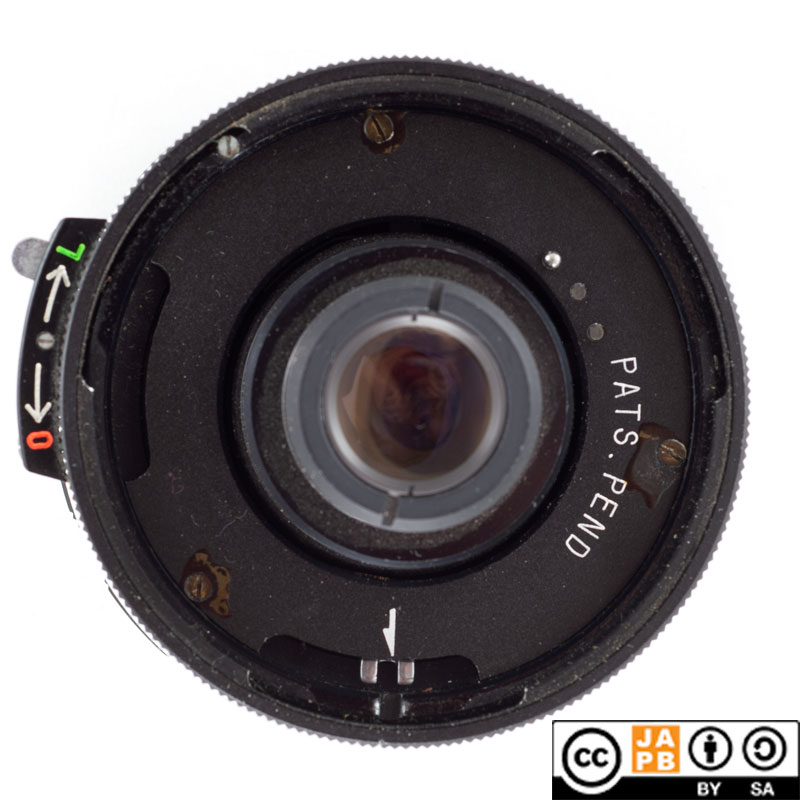
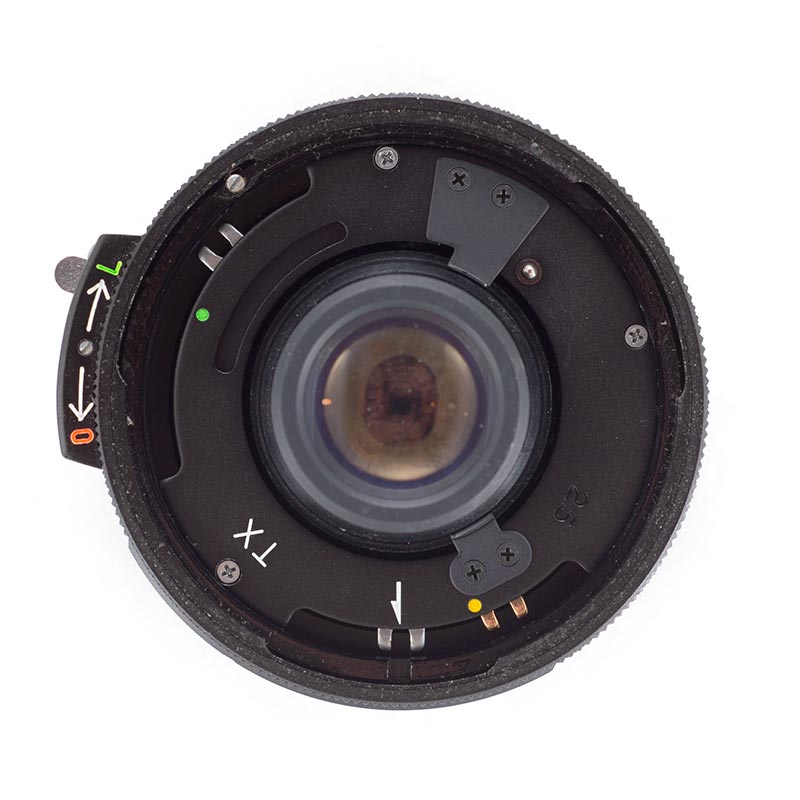
The T-4 intermediate mount.
In 1957 Tamron had started to manufacture camera lenses with the intention of these lenses being used on a wide range of cameras, using a thread-mounted intermediate mount, named simply the T-mount. That mount showed all third-party lens manufacturers the potential advantages of using intermediate mounts. Tamron followed up on that with the T2 mount, and the Adapt-a-Matic bayonet mount.
When Tamron’s competitor Tokina decided to launch their own intermediate mount in the late 1960s, they named it the T-4 mount. The T-4 mount did not only allow auto aperture, but its mounting system was ingenious in two ways: First it was based on a securely locking breech-lock (a ratchet mechanism hindered accidental release) that took up relatively little space, hence placing less limitations on lens design. Second, depending on which adapter the user would mount the lens would choose one of two aperture ring rotation directions, hence guaranteeing that the aperture ring would always turn according to that lens mounts standard direction (hence overcoming what is known as the Contax-vs-Leica difference) (See illustration farther down).
Tokina T-4 lenses were sold by both Soligor and Vivitar (major U.S. rebrand lens retailers)
However, the T-4 mount had the limitation that it did not facilitate full-aperture metering or auto exposure on all mounts. As a result, Tokina upgraded the T-4 mount to the TX-mount in the mid 70s.
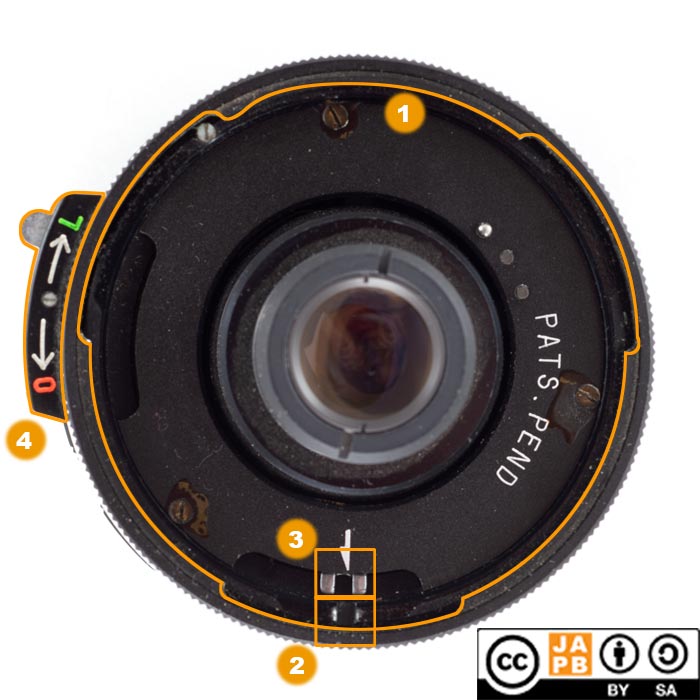
The T-4 Mount and its elements:
[1] three-opening breech-lock mount (1 and 4 rotate together, independent of lens barrel. Hence their angle vis-a-vis the lens barrel might vary)
[2] orientation notch at the bottom of breech-lock
[3] alignment fork, rotates together with aperture ring.
[4] locking clamp with ratchet mechanism with arrows for O(pen) and L(ock). Silver tongue next to L must be pressed to unlock ratchet,
The TX intermediate mount
The TX-mount was introduced to overcome the limitations of the T-4 mount. To achieve this, the lenses needed to be able to communicate selected aperture to the camera, using whatever method that lens mount supported. This added some complexity to the adapter rings as well as the rear-end of the lens, but was handled rather ingeniously.
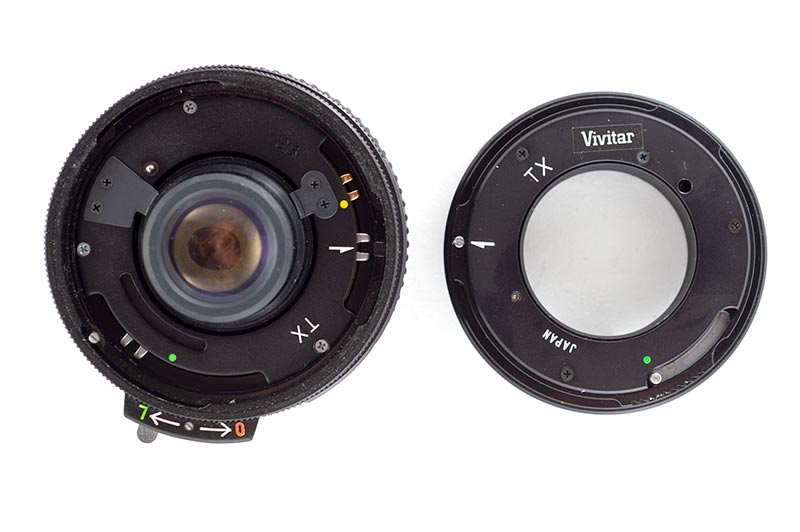
Right: TX-to Nikon F (Ai) adapter
The left image above shows three ‘forks’ as well as an orientation arrow, and two coloured orientation dots. The adapter on the right shows a coloured dot. Some adapters (such as the pictured) were made to be lined up with the green-coloured dot, others to be lined up with the yellow-coloured dot, still others for the white arrow dot. This way the ‘TX mount was able to accommodate a range of behaviours at the camera-end.
To mount the adapter, you were to start by turning the adapter’s aperture ring so that a fork lines up with the same coloured dot as your adapter. Next you insert the adapter so that the orientation arrows meet up.

Note, please: Dual aperture range on aperture ring.
Before going on, you would then rotate the ring on the bottom of your lens so that the aperture scale (readable in the camera’s Judas window) would correspond to the aperture range of the lens in question. Finally, you would press the locking clamp’s button and turn the clamp into the L-position.
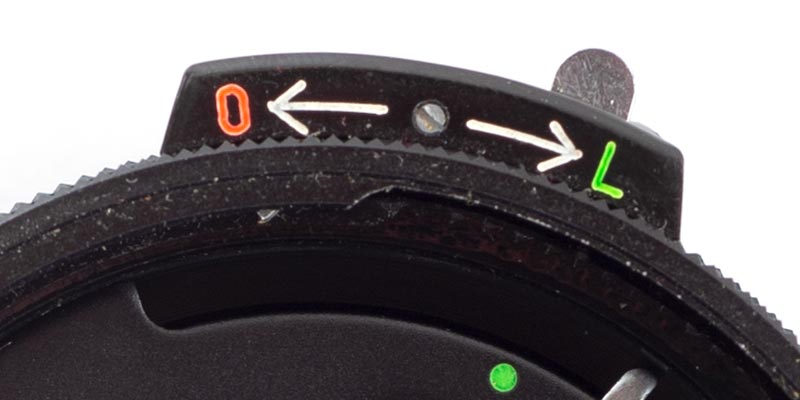
If this mounting procedure feels cumbersome, indeed finicky, this was because the intention was never for adapters being regularly mounted/unmounted. Instead, the intention was for the adapter to be changed only by camera salesmen – once when the lens was being sold (and the buyer said they wanted it for a specific system) and maybe one more time (when the owner came with all their T-4/TX lenses to the camera shop in order to have them modified to the owner’s new camera system). For such a purpose, the adapter mounting procedure was more than simple enough (it necessitated no tools) and relatively foolproof.
Tokina had some success in producing lenses for intermediate mounts, but the increase of electronic lens-body communication and the advent of autofocus lenses forced Tokina to start producing their lenses separately for each mount.
What is noteworthy is that Tokina is one of the few third party lens manufacturers to have remained in the business, while many (most) others have had to throw in the towel.
Tokina TX lenses were sold only by Vivitar.
T-4 / TX mount specifications
Mount type: Breech-lock (locking ring on lens)
Flange focal distance: 56,50 mm to base of breech-lock; 50,50 mm to edge of breech-lock ring (measured, approximate values)
Sensor Size: 36,0 mm x 24,0 mm (Full frame)
Mount communication:
• T-4 lenses are able to respond to aperture stop-down commands and (on some systems) able to communicate the selected aperture.
• TX lenses are able to respond to aperture stop-down commands and (on all systems) able to communicate the selected aperture
• T-4 adapters can be used on TX lenses (but with limited functionality)
Adapting T-4/TX lenses
If you intend to adapt your T-4/TX Adaptall lens to a dSLR…
There are original TX adapters to both Pentax K and Nikon F (Ai) available. These adapters allow you to use the T-4/TX lens as if it was a native (manual focus) lens (including aperture and aperture priority exposure automation). There are also modern adapters available from several adapter manufacturers, but – in general – these adapters are dumb adapters and do not allow aperture control.
If your dSLR is a Canon EF or Sony/Minolta A and Four thirds camera, you are best served with a combination of an original T-4/TX->Nikon adapter and an aftermarket dumb adapter ring to allow mounting Nikon F lenses on Canon EF / Sony/Minolta A / Four Thirds, but will have to manually control aperture.
If you intend to adapt your Tamron Adaptall lens to a mirrorless camera
If you already have a number of adapters from the typical SLR mounts to your mirrorless camera (e.g. Canon FD / m42 / Nikon F / Olympus OM / Pentax K …) your best choice is to get an original T-4/TX adapter to whatever your most favoured SLR era lens mount is.
If you intend to adapt your T-4/TX lens to a film SLR
Given the nature of the T-4/TX mounts, this is – with most cameras – relatively easy as a wide range of adapters were produced, including (at least) Canon FL and FD, Contax/Yashica, Exakta, Icarex BM, Konica AR, M421, Minolta SR, Miranda°, Nikon F (pre-Ai and Ai), Olympus OM, Pentax K and Topcon RE.
Footnotes
1 Note, please. There were both adapters to vanilla m42 mounts as well as some of the m42 variants (ar least Fujica m42). For details, see the JAPB article on the m42 mount.